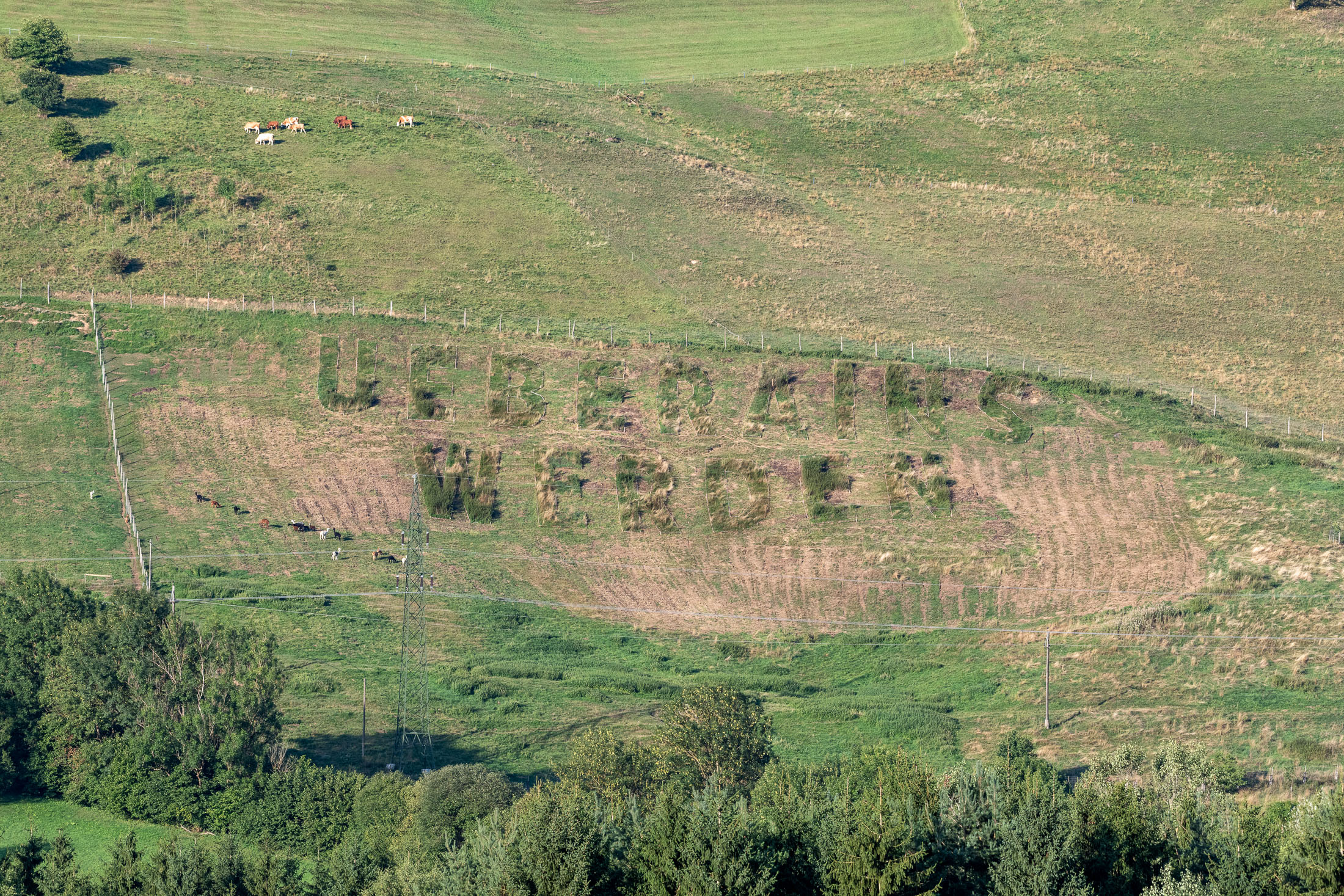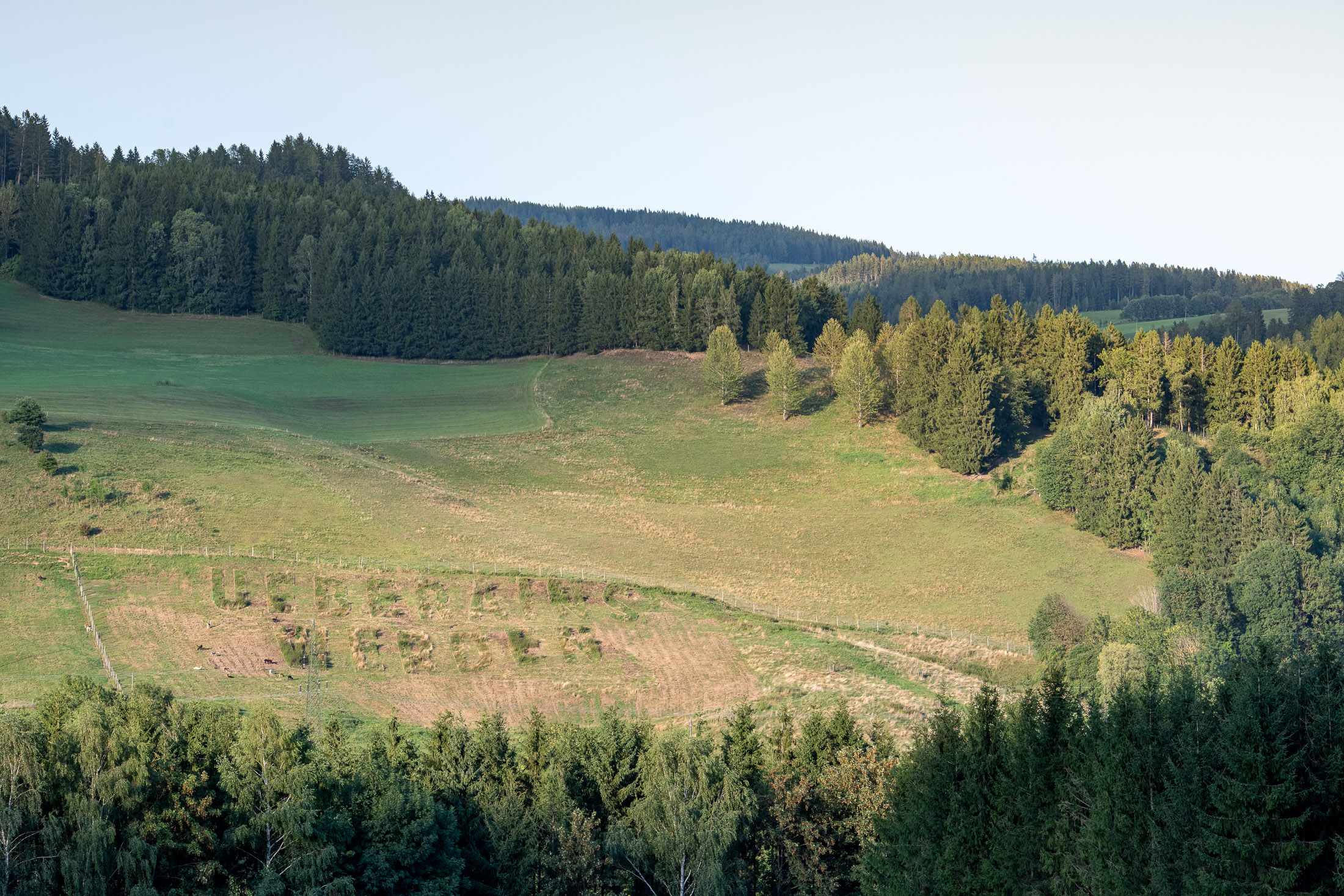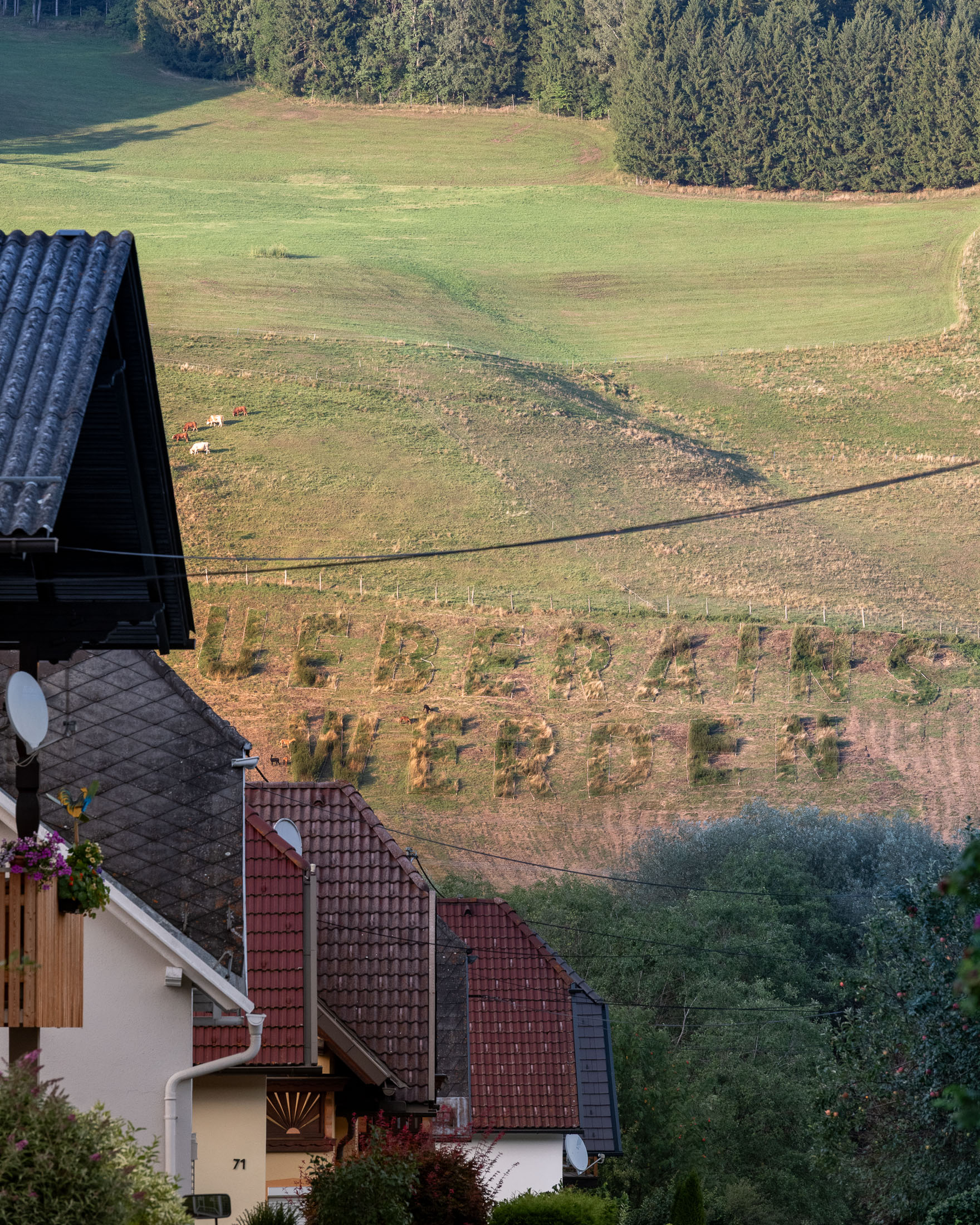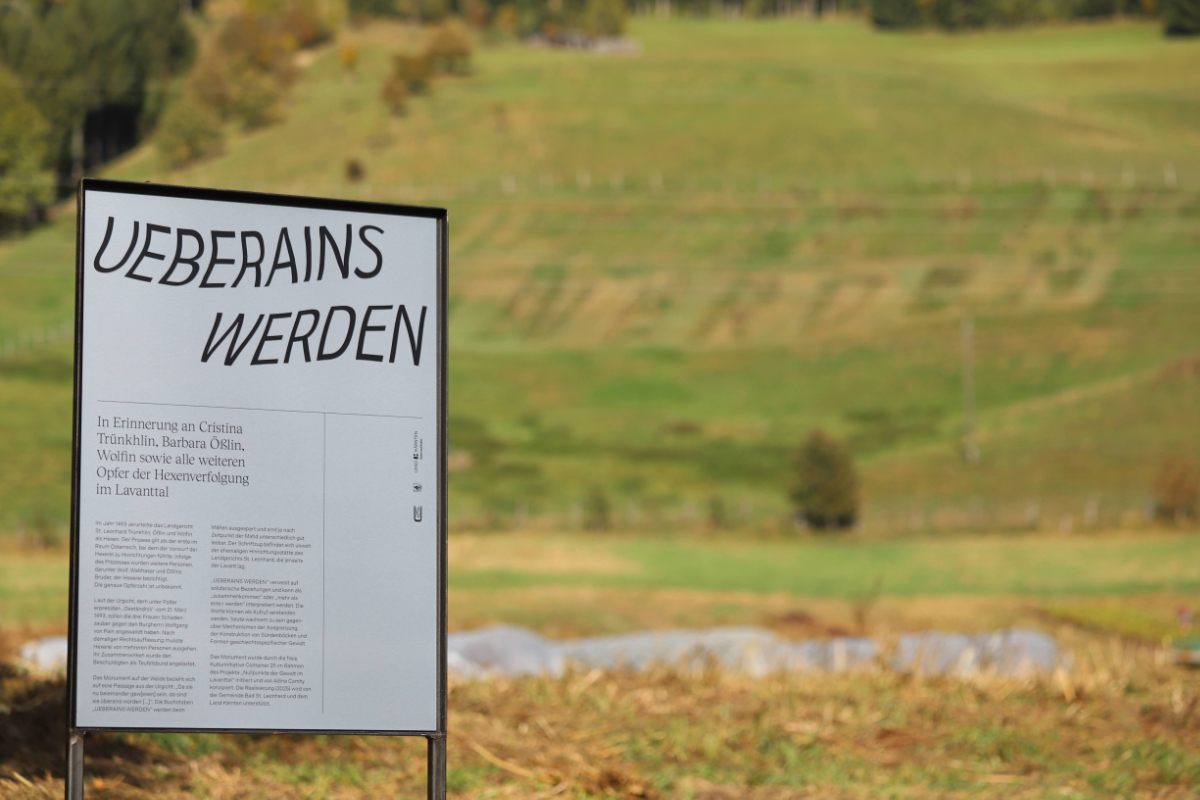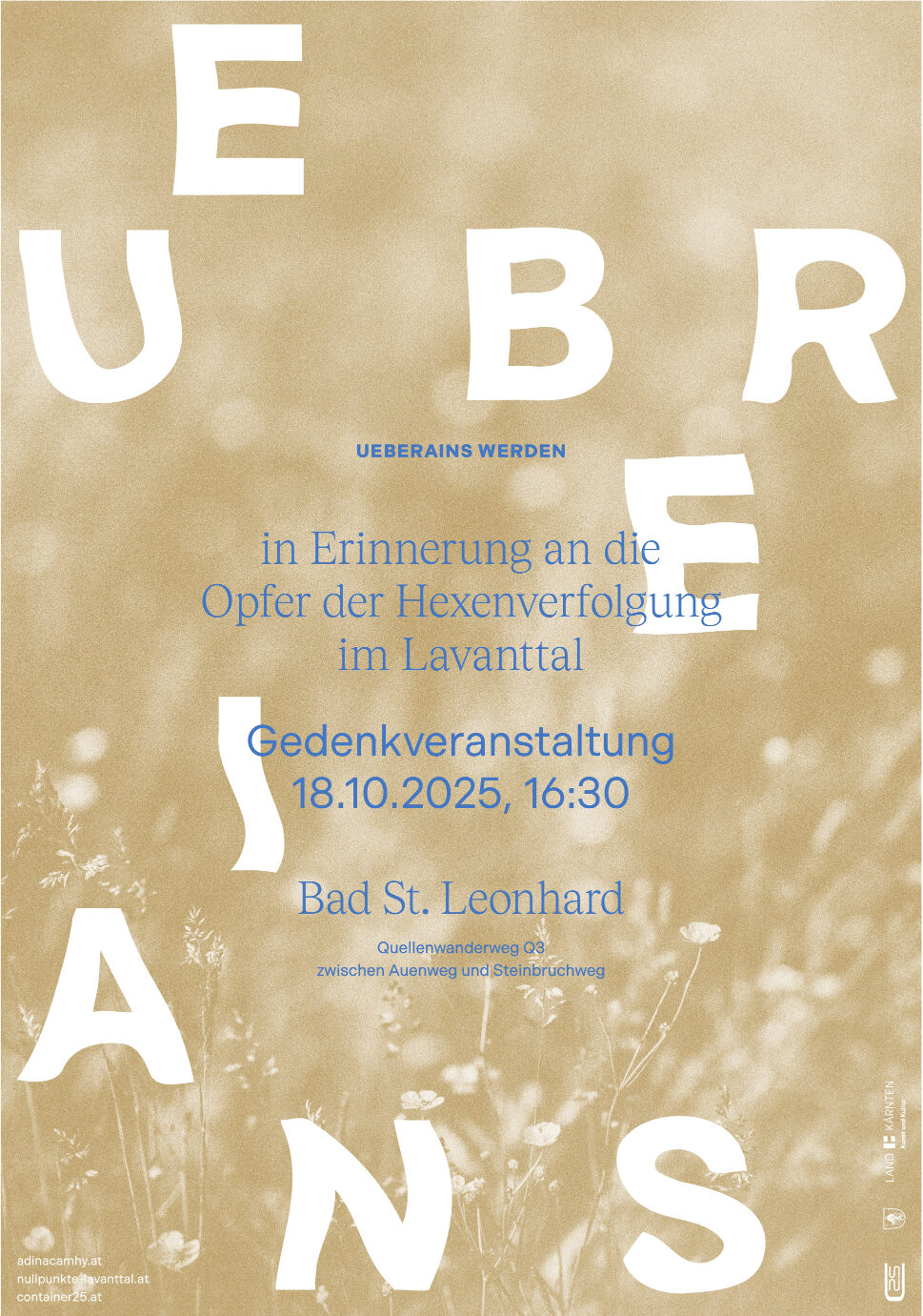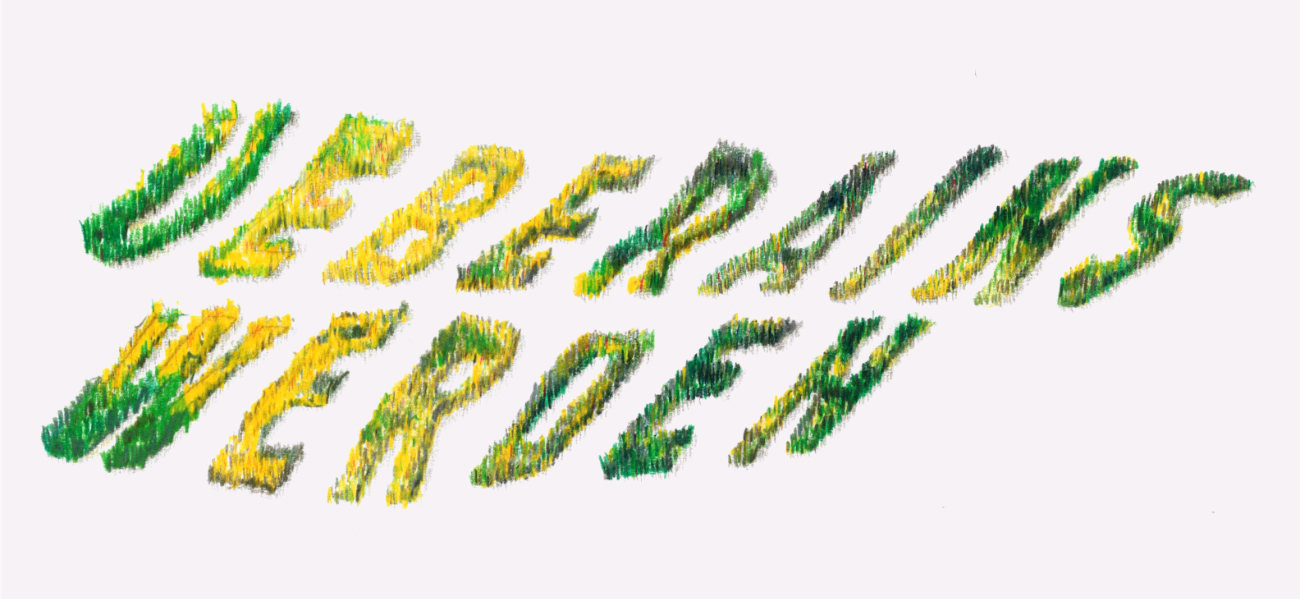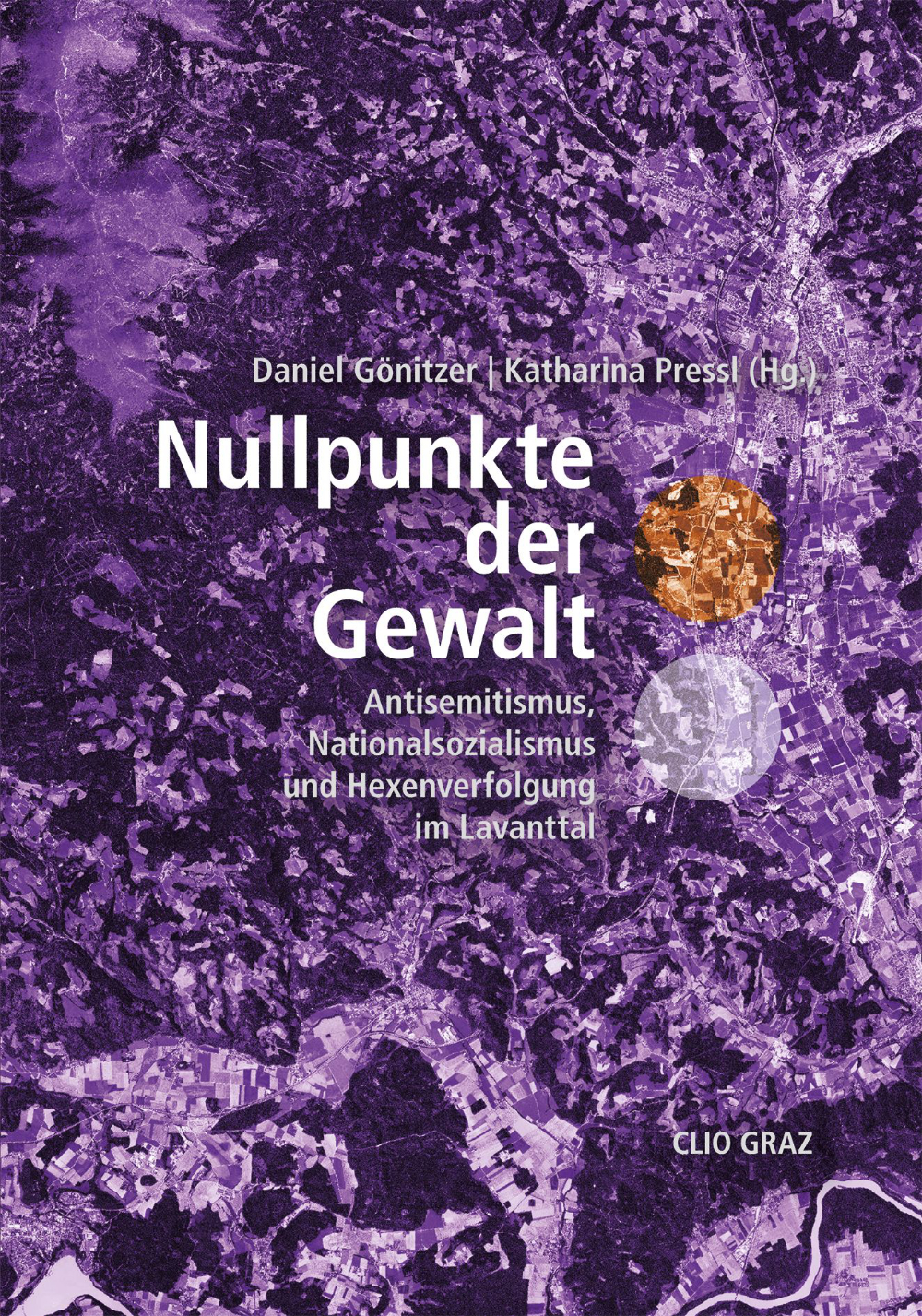UEBERAINS WERDEN
Monument für die Opfer der Hexenverfolgung im Lavanttal
Koordinaten Gedenktafel: 46.951834856530105, 14.809237918514226
Quellenwanderweg Q3, zwischen Auenweg und Steinbruchweg,
Bad Sankt Leonhard im Lavanttal, Kärnten/Koroška
Im Jahr 1493 verurteilte das Landgericht St. Leonhard Cristina Trünkhlin, Barbara Ößlin und Wolfin als Hexen. Laut der Urgicht, dem unter Folter erpressten „Geständnis“ vom 21. März 1493, sollen die drei Frauen Schadenzauber gegen den Burgherrn Wolfgang von Pain angewandt haben. Der Prozess gilt als der erste im Raum Österreich, bei dem der Vorwurf des „Teufelspakts“ zu Hinrichtungen führte. Infolge des Prozesses wurden weitere Personen der Hexerei bezichtigt – die genaue Opferzahl ist unbekannt.
Im heutigen Bad St. Leonhard wird von der Künstlerin Adina Camhy ein Erinnerungszeichen realisiert, das an die drei Frauen und alle weiteren Opfer der Hexenverfolgung im Lavanttal erinnert. Während in der ersten Phase der Lavanttaler Hexenprozesse meist sesshafte Frauen verfolgt wurden, rückten ab 1650 zunehmend Männer, vor allem Vaganten ohne festen Wohnsitz, ins Visier – sie galten als Bedrohung der sozialen Ordnung.
Das Monument bezieht sich auf eine Passage aus der Urgicht von 1493: „Da sie nu beieinander gew[esen] sein, da sind sie überains worden […]“. Die ursprünglich gegen die drei Frauen gerichteten Worte, die der damaligen Rechtssprechung dazu dienen sollten, den Vorwurf des „Teufelspakts“ zu untermauern, werden umgedeutet und ins Heute übertragen:
„UEBERAINS WERDEN“ verweist auf solidarische Beziehungen und kann als „zusammenkommen“ oder „mehr als eine:r werden“ interpretiert werden. Die Worte können als Aufruf verstanden werden, heute wachsam zu sein gegenüber Mechanismen der Ausgrenzung, der Konstruktion von Sündenböcken und Formen geschlechtsspezifischer Gewalt.
„UEBERAINS WERDEN“ wird als Schriftzug südlich von Bad St. Leonhard auf einer Weide nahe der historischen Hinrichtungsstätte sichtbar. Die beim Mähen ausgesparten Buchstaben verändern sich je nach Mahd, Licht und Bewuchs – das Mähen selbst wird zur fortwährenden Erinnerungsarbeit.
Das Belassen eines ungemähten Streifens verweist auf den Feldrain – ein mit Wiesen, Bäumen oder Hecken bewachsener Streifen zwischen Feldern bzw. entlang von Grundstücksgrenzen. Hecke bzw. Einfriedung findet sich auch als „hag“ in „Hagzissa“ (althochdeutsch: Zaunreiterin) wieder, von dem sich das Wort „Hexe“ ableitet. Neben etymologischen Bezügen bietet die Hecke bzw. der verwandte Feldrain auch historische Bezugspunkte. So gibt es Berichte über Frauen, die zwischen 15. und 17. Jhdt in England nachts Hecken ausrissen, um gegen die Privatisierung der Commons (gemeinschaftlich genutzte Flächen) zu protestieren. Dies veranschaulicht die Zusammenhänge von Kämpfen um selbstbestimmtes Wissen, Körper sowie Grund und Boden (vgl. Silvia Federici, Rita Laura Segato).
Das temporäre Monument befindet sich nahe des Wanderwegs Q3 (Knappenbründlweg), wo eine Gedenktafel angebracht wird. Am Samstag, 18. Oktober wird vor Ort eine öffentliche Gedenkveranstaltung stattfinden.
Pressespiegel:
„Container 25: Kulturwohnzimmer in der Pampa”, (Christof Volk), Contraste Nr. 495, Dezember 2025
„Gedenkstätte für verurteilte ,Hexen’“, (Herbert Hollauf), Kleine Zeitung, 22.10.2025
„UEBERAINS WERDEN“, (Th. Probst), Leonharder Blogspot, 22.10.2025
„»Ueberains werden«: Gedenkveranstaltung für die Opfer der Hexenverfolgung im Lavanttal findet statt”, Unterkärntner Nachrichten, 8.10.2025
„Mahnmal wächst für Opfer der Hexenprozesse“ (Ulrike Greiner), Kleine Zeitung, 20.9.2025
„Kollektives Zusammenkommen“, an.schläge – Das feministische Magazin (Veranstaltungstipps), 01.09.2025
„Monument für die Opfer der Hexenverfolgung im Lavanttal“, Bad St. Leonharder Gemeindenachrichten, Juli 2025
Texte:
Adina Camhy: „Ein Heckenmonument für das Lavanttal“, in: Daniel Gönitzer, Katharina Pressl (Hg.), Nullpunkte der Gewalt, CLIO, Graz 2025
Termine:
16. Februar 2026, Lecture Performance, Forum Stadtpark, Graz
Samstag, 18. Oktober 2025, Gedenkveranstaltung für die Opfer der Hexenverfolgung im Lavantta
Eröffnung des Monuments mit Musik von Carinthian Pipes
11 April 2025, Buchpräsentation, Textbeitrag für den Sammelband “Nullpunkte der Gewalt im Lavanttal. Antisemitismus, Nationalsozialismus und Hexenverfolgung im Lavanttal” (herausgegeben von Daniel Gönitzer & Katharina Pressl), Forum Stadtpark, Graz
22 Jänner 2025, Buchpräsentation, Textbeitrag für den Sammelband “Nullpunkte der Gewalt im Lavanttal. Antisemitismus, Nationalsozialismus und Hexenverfolgung im Lavanttal” (herausgegeben von Daniel Gönitzer & Katharina Pressl), Republikanischer Club, Wien
20. Jänner 2023, work in progress Projektpräsentation – Erinnerungszeichen, “Nullpunkte der Gewalt im Lavanttal” (Container 25, Wolfsberg), veranstaltet von FIPU, Republikanischer Club, Wien
9 April 2022, Podium: Hexenverfolgung & Femizide: sich erinnern & widersetzen, Container 25, Wolfsberg
Danke allen Mitwirkenden:
Projektteam „Nullpunkte der Gewalt im Lavanttal“ / Container 25: Daniel Gönitzer, Ingo Gönitzer, Robin Hauser, Ines Mottnik, Elisabeth Pressl, Katharina Pressl, Marlene Radl, Alina Volk, Christof Volk, Sunita Volk
Biogemüse aus dem Lavanttal: Michaela Kois und Johannes Philipps
Vermessungstechnik: Vermessung Simenko
Mäharbeiten: Johann Simenko, Mario Staubmann, Marcel Zarfl
Stahlrahmen Gedenktafel: Paul Lässer
Historische Beratung: Walter Richter, Manuel Swatek
Künstlerische Beratung: Susanna Flock, Robin Klengel, Laura Nitsch
Support: Chrstina Brinkmann, Daniela Camhy, Maria Lisa Pichler, Leonhard Rabensteiner, Christl Steinkellner, Haein Schim, Werner M. Thelian, Rosa Wiesauer
Fotodokumentation: Tom Biela
Support Video: Mario Zaunschirm
Rendering Vorentwurf: Mimi Schmidl
Musik bei der Eröffnung: Christian Minibek (Carinthian Pipes)
Texte: Adina Camhy, Daniel Gönitzer, Katharina Pressl, Christof Volk
Lektorat: Katrin Scheiblhofer
Grafikdesign: Futur Perfekt Studio
Risografie/Druck: Replikat Press
Gemeinde Bad St. Leonhard: Dieter Dohr, Gabriele Moitzi, Alexander Pichler, Günther Trippolt
Land Kärnten/Koroška: Peter Kaiser, Andrea Kirchmeir, Sonja Somma
Konzept und Realisierung: Adina Camhy
Initiiert durch: freie Kulturinitiative Container 25 im Rahmen von „Nullpunkte der Gewalt im Lavanttal“
Unterstützt durch: Gemeinde Bad St. Leonhard
Gefördert durch: Land Kärnten Kultur
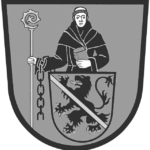


EN
MONUMENT TO THE VICTIMS OF WITCH-HUNTS
Commemorative event for the victims of witch hunts in the Lavant Valley
Opening of the monument:
Saturday, 18 October 2025, 4:30 p.m.
Quellenwanderweg Q3 hiking trail, between Auenweg and Steinbruchweg,
Bad Sankt Leonhard im Lavanttal, Carinthia
Coordinates: 46.951834856530105, 14.809237918514226
The location can be reached on foot via hiking trail Q3.
Regional bus 5484, Wiesenau Abzw. Klippitztörl stop
Vorderklippitz car park (at Klagenfurterstraße 94)
In 1493, the district court of St. Leonhard convicted Cristina Trünkhlin, Barbara Ößlin and Wolfin of witchcraft. According to the verdict, based on a ‘confession’ extracted under torture on 21 March 1493, the three women were said to have used harmful magic against the lord of the castle, Wolfgang von Pain. The trial is considered the first in Austria in which the accusation of a ‘pact with the devil’ led to executions. As a result of the trial, other people were accused of witchcraft – the exact number of victims is unknown.
In today’s Bad St. Leonhard im Lavanttal, the artist Adina Camhy is creating a memorial to commemorate those three women and all victims of witch hunts in the Lavant Valley. While in the first phase of the Lavant Valley witch trials it was mostly settled women who were persecuted, from 1650 onwards men, especially vagrants without a permanent residence, increasingly became the target – they were considered a threat to the social order.
The monument refers to a passage from the 1493 charter: ‘Da sie nu beieinander gew[esen] sein, da sind sie überains worden […]’, which could be translated as ‘since they were together, they became one […]’ or ‘[…] found common ground […]’. The words, originally directed against the three women and intended to support the accusation of a ‘pact with the devil’ in the court proceedings at the time, are reinterpreted and transferred to the present day:
‘UEBERAINS WERDEN’ refers to relationships of solidarity and can be interpreted as ‘coming together’ or ‘becoming more than one.’ The words can be understood as a call to be vigilant today against mechanisms of exclusion, the creation of scapegoats and forms of gender-based violence.
‘UEBERAINS WERDEN’ becomes visible as lettering south of Bad St. Leonhard on a pasture near the historic execution site. The letters, which are left out when mowing, change depending on the mowing, light and vegetation – the mowing itself becomes a continuous act of remembrance.
Leaving an unmowed strip refers to the field margin – a strip of land between fields or along property boundaries that is covered with meadows, trees or hedges. Hedge or enclosure can also be found as ‘hag’ in “Hagzissa” (Old High German: fence rider), from which the German word ‘Hexe’ (witch) is derived. In addition to etymological references, the hedge or related field margin also offers historical points of reference. There are reports of women in England in the 15th-17th centuries tearing up hedges at night to protest against the privatisation of the commons (commonly used land). This illustrates the connections between struggles for self-determined knowledge, bodies and land (cf. Silvia Federici, Rita Laura Segato).
The temporary monument is located near hiking trail Q3 (Knappenbründlweg), where a commemorative plaque will be installed. A public memorial event will take place on site on Saturday, 18 October.
Concept and realisation: Adina Camhy
Initiated by: independent cultural initiative Container25 as part of ‘Zero Points of Violence in the Lavant Valley’
Supported by: Municipality of Bad St. Leonhard
Funded by: Province of Carinthia Culture



